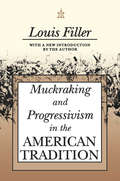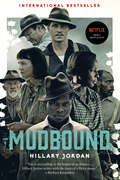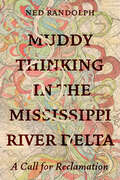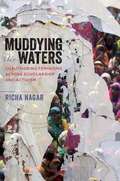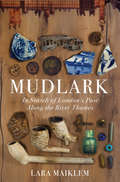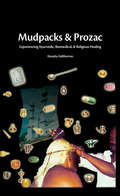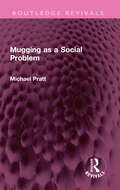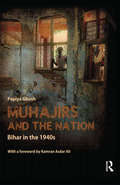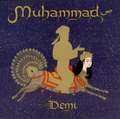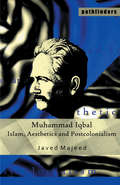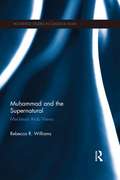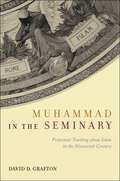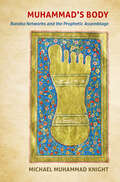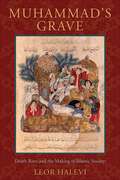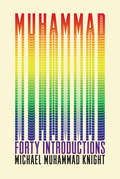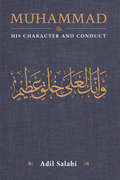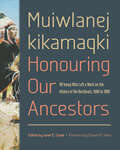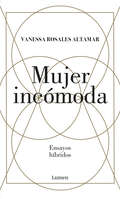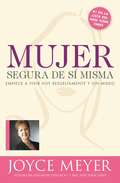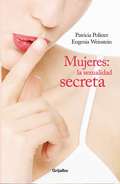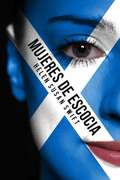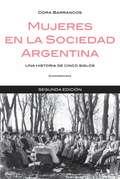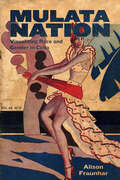- Table View
- List View
Muckraking and Progressivism in the American Tradition
by Louis FillerMuckraking and progressivism have always marched arm-in-arm, cutting a wide path through modern American history. Originally published as Appointment at Armageddon, Filler's book is a vital contribution in understanding the intrinsic dynamic of reform in American life. It extracts from the issues that fostered progressivism and muckraking an essence that illuminates contemporary debate. Filler points out that early twentieth-century progressivism was essentially middle class, seeking common denominators for social interests. It was also a modernizing force in such areas as child labor, poverty, farm problems, and race relations. In his new introduction, Filler reviews various instances of progressivism throughout history. Filler maintains that progressivism died out when pride in its achievements turned to bitterness. Rather than celebrating the progress made by outstanding Americans, such as W.E.B. DuBois and Susan B. Anthony, various groups began focusing only on the oppressed and the oppressors. By concentrating on the negative instead of the positive, Americans abandoned the forward-looking tenets of turn of the century progressivism.Muckraking and Progressivism in the American Tradition is a timely book. It is needed to inspire Americans to find a new way to solve current dilemmas. This significant work will be of interest to sociologists, historians, and political theorists.
Mudbound
by Hillary JordanThe International Bestseller Now a major motion picture from Netflix, directed by Dee Rees, nominated in four categories for the Academy Awards. In Jordan's prize-winning debut, prejudice takes many forms, both subtle and brutal. It is 1946, and city-bred Laura McAllan is trying to raise her children on her husband's Mississippi Delta farm—a place she finds foreign and frightening. In the midst of the family's struggles, two young men return from the war to work the land. Jamie McAllan, Laura's brother-in-law, is everything her husband is not—charming, handsome, and haunted by his memories of combat. Ronsel Jackson, eldest son of the black sharecroppers who live on the McAllan farm, has come home with the shine of a war hero. But no matter his bravery in defense of his country, he is still considered less than a man in the Jim Crow South. It is the unlikely friendship of these brothers-in-arms that drives this powerful novel to its inexorable conclusion. The men and women of each family relate their versions of events and we are drawn into their lives as they become players in a tragedy on the grandest scale. As Barbara Kingsolver says of Hillary Jordan, "Her characters walked straight out of 1940s Mississippi and into the part of my brain where sympathy and anger and love reside, leaving my heart racing. They are with me still."
Muddy Thinking in the Mississippi River Delta: A Call for Reclamation
by Ned RandolphA free ebook version of this title is available through Luminos, University of California Press's Open Access publishing program. Visit www.luminosoa.org to learn more.Muddy Thinking in the Mississippi River Delta uses the story of mud to answer a deceptively simple question: How can a place uniquely vulnerable to sea level rise be one of the nation's most promiscuous producers and consumers of fossil fuels? Organized around New Orleans and South Louisiana as a case study, this book examines how the unruly Mississippi River and its muddy delta shaped the people, culture, and governance of the region. It proposes a framework of "muddy thinking" to gum the wheels of extractive capitalism and pollution that have brought us to the precipice of planetary collapse. Muddy Thinking calls upon our dirty, shared histories to address urgent questions of mutual survival and care in a rapidly changing world.
Muddying the Waters: Coauthoring Feminisms across Scholarship and Activism
by Richa NagarIn Muddying the Waters, Richa Nagar uses stories, encounters, and anecdotes as well as methodological reflections, to grapple with the complexity of working through solidarities, responsibility, and ethics while involved in politically engaged scholarship. Experiences that range from the streets of Dar es Salaaam to farms and development offices in North India inform discussion of the labor and politics of co-authorship, translation and genre blending in research and writing that cross multiple--and often difficult--borders, Nagar links the implicit assumptions, issues, and questions involved with scholarship and political action, and explores the epistemological risks and possibilities of creative research that brings these into intimate dialogue. Daringly self-conscious, Muddying the Waters reveals a politically engaged research and writer working to become "radically vulnerable," and on the ways a focus on such radical vulnerability could allow a re-imagining of collaboration that opens new avenues to collective dreaming and laboring across sociopolitical, geographical, linguistic, and institutional borders.
Mudlark: In Search Of London's Past Along The River Thames
by Lara Maiklem“Engrossing . . . evokes the subculture of the ‘mudlarks,’ who scour the banks for fragments of London’s past.”—The New Yorker The international bestseller that mesmerizingly charts quixotic journeys through London’s past, Mudlark thrills Anglophiles and history lovers alike. Long heralded as a city treasure herself, beloved “Mudlark” Lara Maiklem tirelessly treks along the Thames’ muddy shores, unearthing a myriad of artifacts and their stories—from Roman hairpins and perfectly preserved Tudor shoes to the clay pipes that were smoked in riverside taverns. Seamlessly interweaving reflections from her own life with meditations on the art of wandering, Maiklem ultimately delivers a treatise “as deep and as rich as the Thames and its treasures” (Stanley Tucci).
Mudpacks and Prozac: Experiencing Ayurvedic, Biomedical, and Religious Healing
by Murphy HalliburtonPeople seeking psychiatric healing choose from an almost dizzying array of therapies—from the medicated mud packs of Ayurveda, to the pharmacopeia of Western biomedicine, to the spiritual pathways of the world's religions. How do we choose, what do the treatments offer, and how do they cure? In Mudpacks and Prozac, Murphy Halliburton investigates the very different ways in which Ayurvedic, Western, and religious (Christian, Muslim, and Hindu) healing systems define psychiatric problems and cures. He describes people's embodied experiences of therapies that range from soothing to frightening, and explores how enduring pleasure or pain affects healing. And through evocative portraits of patients in Kerala, India—a place of incredible cultural diversity that has become a Mecca for alternative medicine—Halliburton shows how sociopolitical changes around the globe may be limiting the ways in which people seek and experience health care, with negative effects on our quality of health and quality of life.
Muerte, morir, inmortalidad
by Federico Ortiz QuezadaEste libro tiene la intención de ordenar algunas ideas respecto de la muerte y el acto de morir. Nacer y morir son las dos constantes de toda vida. Vivimos inmersos en ellas y, aun cuando vivir ofrece la certeza de la muerte, evitamos reflexionar en torno a este tema y lo dejamos en manos de la religión.Sin embargo, tenemos muchas preguntas que nos inquietan: ¿cómo debe tratarse al moribundo?, ¿qué le acontece al ser humano cuando muere?, ¿existe la inmortalidad humana?Escrito por un especialista en las ideas respecto a la muerte, este libro ofrece, desde una perspectiva científica, una respuesta a las interrogantes que a diario nos hacemos. Analiza las ideas religiosas y filosóficas vigentes respecto a la muerte, describe lo que la medicina hace para paliar el dolor del moribundo y del duelo familiar y reflexiona en torno a la inmortalidad humana.
Mugging as a Social Problem (Routledge Revivals)
by Michael PrattFirst published in 1980, Mugging as a Social Problem sets out to remedy the deficiency of serious research on mugging. The work is based on a random sample of over 1000 muggings which occurred within the Metropolitan Police District in the mid-1970s, and the author analyses the results not only in absolute and comparative terms but also against a background of social determinants such as ecology, deprivation and race. Dr. Pratt’s long-term solution is not novel: an all-round improvement in housing, employment and social conditions will eventually remove the circumstances which create muggers; but there are steps, he suggests, which can be taken in the short term to stop mugging by reducing opportunity. However, before any effective measures can be introduced, more facts are needed about the background, motives and methods of the typical mugger: it is just such facts that this study sets out to provide. This book will be of interest to students of sociology, law, urban studies and criminology.
Muhajirs and the Nation: Bihar in the 1940s
by Papiya GhoshFirst published in 2009. Routledge is an imprint of Taylor & Francis, an informa company.
Muhammad
by DemiMuhammad is the messenger of Islam. Born in Mecca in the year 570, Muhammad grew into a sensitive and thoughtful man who believed deeply in the worship of one true god. In his fortieth year, Muhammad experienced a revelation from the angel Gabriel that he, Muhammad, was the messenger of God. Over the next twenty-three years, he received many such revelations, all of which were written down by scribes at the time of revelation to become the Koran, the sacred scripture of Islam, a religion that is practiced by nearly one-quarter of the world's population and holds as its most sacred tenet that there is no god but God. Award-winning artist Demi here introduces the remarkable life of the Prophet Muhammad for young readers.
Muhammad Iqbal: Islam, Aesthetics and Postcolonialism (Pathfinders Ser.)
by Javed MajeedBringing together Islamic studies, a postcolonial literary perspective, and a focus on the interaction between aesthetics and politics, this book analyses Iqbal’s Islamism through his poetry. It argues that his notion of an Islamist selfhood was expressed in his verse through the interplay between poetic tradition and creative innovation. It also considers how Iqbal expressed an Islamist geopolitical imagination in his work, and examines his exploration of the relationship between the modern West and a reconstructed Islam. For the first time, Iqbal’s personal letters have been drawn upon to provide an insight into his inner conflicts as articulated in his poetry. Concentrating on the complexity of his work in its own right, the book eschews the standard appropriation of Iqbal into any one political agenda — be it Indian nationalism, Muslim separatism or Iranian Islamic republicanism. With its analytical and in-depth reading of Iqbal’s verse and prose, this book opens a fresh perspective on Islam and postcolonialism. It will be a fascinating study for general readers and readers with interests in the intellectual and political history of modern South Asia, colonialism and postcolonialism, Islamic studies, and modern South Asian literature (especially Urdu and Persian poetry).
Muhammad and the Supernatural: Medieval Arab Views
by Rebecca WilliamsMuhammad and the Supernatural: Medieval Arab Views examines the element of the supernatural (or miracle stories) in the life of the Prophet Muhammad as depicted in two genres: prophetic biography (sīra) and Qur'ān exegesis (tafsīr).
Muhammad in the Seminary: Protestant Teaching about Islam in the Nineteenth Century
by David D. GraftonUncovers what Christian seminaries taught about Islam in their formative yearsThroughout the nineteenth century, Islam appeared regularly in the curricula of American Protestant seminaries. Islam was not only the focus of Christian missions, but was studied as part of the history of the Church as well as in the new field of comparative religions. Moreover, Arabic was taught as a cognate biblical language to help students better understand biblical Hebrew. Passages from the Qur’an were sometimes read as part of language instruction.Christian seminaries were themselves new institutions in the nineteenth century. Though Islam had already been present in the Americas since the beginning of the slave trade, it was only in the nineteenth century that the American public became more aware of Islam and had increasing contact with Muslims. It was during this period that extensive trade with the Ottoman empire emerged and more feasible travel opportunities to the Middle East became available due to the development of the steamship. Providing an in-depth look at the information about Islam that was available in seminaries throughout the nineteenth century, Muhammad in the Seminary examines what Protestant seminaries were teaching about this tradition in the formative years of pastoral education. In charting how American Christian leaders’ ideas about Islam were shaped by their seminary experiences, this volume offers new insight into American religious history and the study of Christian-Muslim relations.
Muhammad's Body: Baraka Networks and the Prophetic Assemblage (Islamic Civilization and Muslim Networks)
by Michael Muhammad KnightMuhammad's Body introduces questions of embodiment and materiality to the study of the Prophet Muhammad. Analyzing classical Muslim literary representations of Muhammad's body as they emerge in Sunni hadith and sira from the eighth through the eleventh centuries CE, Michael Muhammad Knight argues that early Muslims' theories and imaginings about Mu&7717;ammad's body contributed in significant ways to the construction of prophetic masculinity and authority. Knight approaches hadith and sira as important religiocultural and literary phenomena in their own right. In rich detail, he lays out the variety of ways that early believers imagined Muhammad's relationship to beneficent energy—baraka—and to its boundaries, effects, and limits. Drawing on insights from contemporary theory about the body, Knight shows how changing representations of the Prophet's body helped to legitimatize certain types of people or individuals as religious authorities, while marginalizing or delegitimizing others. For some Sunni Muslims, Knight concludes, claims of religious authority today remain connected to ideas about Muhammad's body.
Muhammad's Grave: Death Rites and the Making of Islamic Society
by Leor HaleviIn his probing study of the role of death rites in the making of Islamic society, Leor Halevi imaginatively plays prescriptive texts against material culture and advances new ways of interpreting highly contested sources. His original research reveals that religious scholars of the early Islamic period produced codes of funerary law not only to define the handling of a Muslim corpse but also to transform everyday urban practices. Relying on oral traditions, these scholars established new social patterns in the cities of Arabia, Mesopotamia, and the eastern Mediterranean. They distinguished Islamic rites from Christian, Jewish, and Zoroastrian rites and changed the way men and women interacted publicly and privately.In each chapter Halevi explores a different layer of human interaction, following the movement of the corpse from the deathbed to the grave. In the process he analyzes the real and imaginary relationships between husbands and wives, prayer leaders and mourners, and even dreamers and the dead. He describes how Muslims wailed for the deceased, prepared corpses for burial, marched in funerary processions, and prayed for the dead, highlighting the specific economic and political factors involved in these rituals as well as key religious and sexual divisions. Offering a unique perspective on the making of Islamic social and religious ideals during this early period, Halevi forges a fascinating link between the development of funerary rites and the efforts of an emerging religion to carve out its own, distinct identity. Muhammad's Grave is a groundbreaking history of the rise of Islam and the roots of contemporary Muslim attitudes toward the body and society.
Muhammad: Forty Introductions
by Michael Muhammad Knight"More than a survey of the prophet’s life and times, this book is an introduction to the stunning diversity of Islam and the ways in which Muslims think, dream, and make Muhammad into their very own prophet." —Publishers Weekly (starred review)He ranks among the most venerated historical figures in the world, as well as among the most contested. Muhammad: Forty Introductions offers a distinct and nuanced take on the life and teachings of the prophet Muhammad, using a traditional genre of Islamic literature called the forty hadiths collection.Hadiths are the reported sayings and actions of Muhammad that have been collected by the tens of thousands throughout Islamic history. There is a tradition in which Muslim scholars take from this vast textual ocean to compile their own smaller collections of forty hadiths, an act of curation that allows them to present their particular understanding of Muhammad’s legacy and the essential points of Islam. Here, Michael Muhammad Knight offers forty narrations that provide windows into the diverse ways in which Muslims envision Muhammad. He also examines his own relationship to Muslim traditions while exploring such topics as law, mysticism, sectarianism, gender, and sexuality. By revealing the Prophet to be an ongoing construction, he carefully unravels notions about Islam’s center and margins.
Muhammad: His Character and Conduct
by Adil SalahiMuslims all over the world see Muhammad as God's last messenger to mankind. Through his actions, he showed the way to live a life that provides for all the needs of body, mind, and soul, and elevates man's aspirations towards a sublime ideal in a very simple, direct, and truthful manner. He built a state that was dedicated to truth and justice and to the liberation of man throughout the world. He wrote to emperors, kings, and rulers, calling on them to believe in God and to follow His message, yet, at the same time, he lived a life of poverty, leaving aside the riches that were offered to him.At a time when the Prophet is much maligned by writers, cartoonists, and various other detractors, this book aims to show Muhammad's true character in detail, both in its most everyday and most extraordinary moments.Adil Salahi's writings include the acclaimed Muhammad: Man and Prophet and Pioneers of Islamic Scholarship, and the English translation of the eighteen-volume In the Shade of the Qur'an. His main career has been in radio and print journalism, and for over thirty years he was editor of "Islam in Perspective," a twice-weekly full-page column in the Arab News, a Saudi daily newspaper.
Muiwlanej kikamaqki "Honouring Our Ancestors": Mi’kmaq Who Left a Mark on the History of the Northeast, 1680 to 1980 (Studies in Atlantic Canada History)
by Janet E. ChuteDrawing upon oral and documentary evidence, this volume explores the lives of noteworthy Mi’kmaw individuals whose thoughts, actions, and aspirations impacted the history of the Northeast but whose activities were too often relegated to the shadows of history. The book highlights Mi’kmaw leaders who played major roles in guiding the history of the region between 1680 and 1980. It sheds light on their community and emigration policies, organizational and negotiating skills, diplomatic endeavours, and stewardship of land and resources. Contributors to the volume range from seasoned scholars with years of research in the field to Mi’kmaw students whose interest in their history will prove inspirational. Offering important new insights, the book re-centres Indigenous nationhood to alter the way we understand the field itself. The book also provides a lengthy index so that information may be retrieved and used in future research. Muiwlanej kikamaqki – Honouring Our Ancestors will engage the interest of Indigenous and non-Indigenous readers alike, engender pride in Mi’kmaw leadership legacies, and encourage Mi’kmaw youth and others to probe more deeply into the history of the Northeast.
Mujer incómoda
by Vanessa RosalesEnsayos híbridos Vanessa Rosales Altamar recoge en estos ensayos vivencias y reflexiones personalísimas sobre sus inquietudes más genuinas, basadas en la experiencia de ser mujer y siempre desde los cuestionamientos y la incomodidad. Acá se encuentran temas como el amor, la gran renuncia femenina, la figura del padre, le estética, el catolicismo, el Caribe, todo aquello que ha labrado su pensamiento y su prosa envolvente. Esta es una hermosa bitácora de una vida que anda en la búsqueda incansable de su lugar en el mundo, a pesar de los obstáculos íntimos, pero también de los más públicos y comunes a tantas. "Te aplaudo, Vanessa Rosales, y celebro tu misión personal y académica de explorar el papel desajustado, estrecho y problemático que "lo femenino" desempeña tan a menudo en nuestras vidas. La incomodidad, después de todo, es el camino tanto para el descubrimiento como para el cambio. De una mujer incómoda a otra, te digo: ¡bravo!". Siri Hustvedt "Quiero que todas las mujeres que conozco lean este libro. Sobre todo las de mi ciudad y sobre todo las más jóvenes -ojalá niñas recién alfabetizadas-, porque entender de dónde venimos hará que la elección de futuro sea menos restringida, menos viciada, menos oscura, menos pedregosa. Las palabras de Vanessa son pura luz y libertad. Y este libro es una poesía bella y dolorosa esculpida a martillazos". Margarita García Robayo
Mujer segura de si misma: Empiece a vivir hoy resueltamente y sin miedo
by Joyce MeyerJoyce Meyer, la autora de éxitos de ventas de la lista del New York Times, recurre a sus décadas de experiencia ministrando e interactuando con mujeres. El mensaje de este libro es también parte de sus propias vivencias, desde la inseguridad y el odio a sí misma, hasta la confianza que le permitió ver y concretar todo su potencial. Meyer brinda a las mujeres las claves para identificar las barreras que les impiden la seguridad en sí mismas, y explora el poder que viene a través de la preparación, definiendo los pasos hacia la independencia por medio de la dependencia de Dios. Meyer explora las siete características de una mujer segura de sí misma: una mujer que sabe que es amada, se niega a vivir con miedo y no vive comparándose con otras personas. Una vida emocionante, con propósito, le espera a toda mujer que aprende cómo vivir más allá del miedo... ¡con seguridad! Dios quiere iluminar nuestro camino y darnos todo lo que necesitamos para caminar ¡seguras de nosotras mismas!
Mujeres
by Eugenia Weinstein Patricia Politzer¡Qué fácil ha sido ignorar la sexualidad femenina durante siglos! Razones sobran. La más obvia es, sin duda, la biológica: a diferencia de los genitales masculinos, los femeninos están ocultos, y bien ocultos? Así se inicia esta obra imprescindible, un acercamiento abierto y sin prejuicios a la sexualidad femenina, en la que la psicoterapeuta Eugenia Weinstein y la periodista Patricia Politzer se unen para derribar los tabúes a los que todavía estamos acostumbrados: conceptos como frigidez, multiorgasmo, la falta de deseo, el ojo erótico del hombre y el oído afrodisíaco de la mujer, entre otros, son abordados con gran conocimiento y naturalidad. Mujeres: la sexualidad secreta ?un éxito editorial con miles de ejemplares vendidos? es una lectura indispensable para jóvenes y adultos de todos los géneros que buscan entender el mundo íntimo de la mujer sin ambigüedades ni eufemismos.
Mujeres de Escocia
by Helen Susan Swift Omar Rios-BernÿMujeres de Escocia es un viaje temático en el tiempo a través de la historia escocesa y del importante papel que las mujeres jugaron en su pasado. Desde las humildes hasta las grandiosas, las escocesas han estado en la vanguardia y en los orígenes de los hechos. Aquí están las pescadoras, las guerreras, las grandes escritoras, las jacobitas, las mártires y las molineras. Sin ellas, Escocia no existiría. Únase a un gran viaje, desde la Edad Media hasta el siglo XXI, y aprenda sobre las mujeres que han sido la fuerza motriz detrás de una pequeña, aunque dinámica nación.
Mujeres en la sociedad Argentina: Una historia de cinco siglos
by Dora BarrancosUna historia de las mujeres argentinas desde la conquista hasta laactualidad, por una gran especialista en el género. La historia de las mujeres representa una de las vertientes másvigorosas de la historiografía actual. Su principal cometido es hacervisible la presencia femenina a lo largo de los tiempos, saldando así undébito de la empresa histórica. No se trata solamente de reconocer lascontribuciones de las mujeres o de celebrar sus méritos, sino sobre todode vislumbrarlas cualquiera sea la trascendencia de sus actos. Estelibro se ha basado en un enorme volumen de investigaciones sobre la vidade las mujeres desde el período precolombino y da cuenta de los cambiosde las relaciones de género -que deben comprenderse como relacionesentre mujeres y varones- en el transcurso de cinco siglos. No hay dudassobre la inferioridad que aquellas han padecido, reforzada en el sigloXIX cuando se ampliaron los derechos de los varones. Pero siempre huboformas de burlar la sujeción. El feminismo y los cambios notables delsiglo XX minaron preconceptos y pudo avanzarse en ciertos derechos. Delmandato exclusivo del «ángel del hogar», se evolucionó a laincorporación de las mujeres a la vida política y a otros dominiospúblicos. Sin duda, en las últimas décadas se alteraronsignificativamente las normas morales coercitivas. Y aunque lastransformaciones resultan incontestables, nuestra sociedad espera aúnpor la completa equidad entre los sexos.
Mujeres que corren con los Lobos
by Clarissa Pinkola Estés«En toda mujer hay fuerzas poderosas pendientes de descubrir.» Mujeres que corren con los lobos es un fascinante mosaico de historias que nos ofrece una nueva visión de lo femenino y de sus posibilidades. Dentro de toda mujer alienta una vida secreta, una fuerza ponderosa llena de Buenos instintos, creatividad y sabiduría. Es la Mujer Salvaje, una especie en peligro de extinción debido a los contantes esfuerzos de la sociedad por «civilizar» a las mujeres y constreñirlas a rígidos papeles que anulan su esencia instintiva. En este libro, Clarissa Pinkola Estés revela ricos mitos interculturales, cuentos de hadas e historias (muchas de ellas relativas a su propia familia) para contribuir a que las mujeres recuperen su fuerza y su salud, atributos visionarios de esta esencia instintiva. Mediante los relatos y los comentarios de la autora, examinamos el amor y comprendemos a la Mujer Salvaje. Estés ha creado una psicología femenina en un sentido más verdadero, el que lleva al conocimiento del alma.
Mulata Nation: Visualizing Race and Gender in Cuba (Caribbean Studies Series)
by Alison FraunharRepeatedly and powerfully throughout Cuban history, the mulata, a woman of mixed racial identity, features prominently in Cuban visual and performative culture. Tracing the figure, Alison Fraunhar looks at the representation and performance in both elite and popular culture. She also tracks how characteristics associated with these women have accrued across the Atlantic world.Widely understood to embody the bridge between European subject and African other, the mulata contains the sensuality attributed to Africans in a body more closely resembling the European ideal of beauty. This symbol bears far-reaching implications, with shifting, contradictory cultural meanings in Cuba. Fraunhar explores these complex paradigms, how, why, and for whom the image was useful, and how it was both subverted and asserted from the colonial period to the present. From the early seventeenth century through Cuban independence in 1899 up to the late revolutionary era, Fraunhar illustrates the ambiguous figure's role in nationhood, citizenship, and commercialism. She analyzes images including key examples of nineteenth-century graphic arts, avant-garde painting and magazine covers of the Republican era, cabaret and film performance, and contemporary iterations of gender.Fraunhar's study stands out for attending to the phenomenon of mulataje not only in elite production such as painting, but also in popular forms: popular theater, print culture, later films, and other media where stereotypes take hold. Indeed, in contemporary Cuba, mulataje remains a popular theme with Cubans as well as foreigners in drag shows, reflecting queerness in visual culture.
